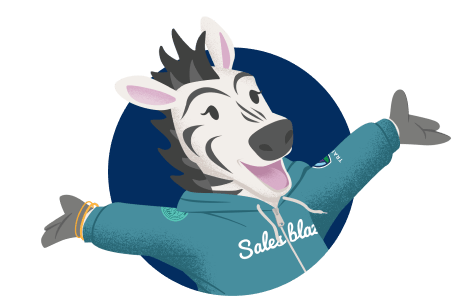In the sales world, it can be tempting to think of the famous scene from “Glengarry Glen Ross,” when “Blake from downtown” dresses down a room of salespeople, admonishing them to “always be closing.” While closing deals is important, there’s something many salespeople overlook: customer engagement. Customer engagement in sales is the critical element of attracting and keeping customers long after the deal is inked.
A well-executed strategy can mean the difference between leading the pack or watching valued customers drift away. If you’re wondering where to start, you’re in the right place to learn. We’ll examine what customer engagement in sales is, how to measure success, and how to use technology to build better customer relationships.
What you’ll learn:
- What is customer engagement in sales?
- Benefits of strong customer engagement in the sales process
- How to build an effective customer engagement strategy (and measure the results)
- What to look for in customer engagement sales software
Never miss another red flag in a sales call
See how Einstein Conversation Insights assists you in sales calls — with intel into what customers are saying.



What is customer engagement in sales?
Customer engagement in sales is about building and maintaining strong customer relationships beyond a single transaction. It means creating seamless, highly personalized experiences for customers that meet them where they are — whether that’s on social media, a company’s website, or at events such as conferences and webinars. It can be helpful to think of customer engagement in sales as an ongoing conversation and building a lasting relationship, one that continues long after a prospect signs on the dotted line.
Benefits of strong customer engagement in the sales process
Building customer engagement takes time, but it can be well worth the effort. Like any good conversation, it’s a two-way street, and a crucial part of it is paying close attention to how customers describe what’s important to them. If you listen, here are some of the top benefits you can expect on the horizon:
Higher customer satisfaction
Customer satisfaction is now front and center as companies begin to focus on long-term relationships rather than short-term wins. By leaning into customer engagement, sales teams can build trust with their clients. In fact, 80 percent of sales reps say maintaining customer relationships after the close is increasingly important.
Increased revenue potential
Customer engagement in sales can play a significant role in boosting revenue far beyond the current quarter or fiscal year. When a sales team creates a customer experience that truly engages customers, they’re showing just how valued those clients are. Customers will notice that personalized touch, and they’ll repay those efforts with long-term loyalty — perhaps becoming the kind of fiercely engaged client known as a sticky customer. Those loyal customers, if engaged properly, serve as more than reliable, long-term sources of revenue. They can also become brand ambassadors, spreading the word about your products and services, which will help land new business.
Like the old saying, “A rising tide lifts all boats,” a strong customer engagement process in sales can have wide-ranging positive effects on the bottom line. Consider what Bain & Company found when it researched customer loyalty in the financial services sector: Improving customer retention rates by 5% led to an astounding 25% increase in profits. And given that the process of attracting new customers can cost anywhere from five to 25 times the effort to retain existing ones, it makes sound business sense to invest in customer retention.
Upsell and cross-sell opportunities
While that investment can go a long way toward reducing churn rates — resulting in greater customer lifetime value and lower acquisition costs — it also opens up other avenues to creating more revenue. Take upselling and cross-selling, for example. Once you have developed a robust customer engagement in sales motion, thus earning trust and loyalty, your clients will become increasingly receptive to purchasing more. That means greater expansion rates as well as broader adoption of other products your business offers, including ones from other brands in your portfolio. The result? Increased short-term and long-term profits. Simply put, by building a strong customer engagement in sales strategy — and crucially, providing sales professionals with robust sales engagement tools — you can both boost customer lifetime value while outflanking the competition.
How to build an effective customer engagement strategy (and measure the results)
No customer engagement strategy will be effective without accurate, timely data. If your sales organization has just begun to lay the groundwork for an engagement strategy, the first step will be to employ a solid CRM. That platform will be your source of truth, a wellspring of actionable information that will show your team where your customers are, who they are, and what they’re buying — or not buying. It will also be a key data source about customer pain points.
However, while a CRM will provide the bedrock data you need to get your customer engagement strategy going, consider expanding it to a true customer engagement platform. From live chat and chatbot features to phone and email channels, a customer engagement platform provides sales teams (as well as support organizations) critical omnichannel engagement. That means that no matter which channel customers prefer — and crucially, if they switch between channels — your team will know the best way to reach clients. So for example, a customer engagement platform can show a sales team that most of its customers prefer to interact on social media, a critical piece of data that will help sales professionals direct their efforts to that channel. Again, customer engagement in sales means meeting customers where they are, not where you are.
A sound customer engagement strategy in sales requires knowing when and where to reach out. However, it’s not enough to stop there. To achieve true success, a sales organization must define its goals and implement ways to track and measure its efforts. Doing so ensures that resources aren’t wasted and any obstacles to strengthening customer relationships are promptly identified. There are few instances in business when a team can adopt a “set it and forget it” process, and customer engagement strategies are no exception. Here are few things to consider:
Identify metrics and define what success looks like
It’s important to measure certain metrics such as customer satisfaction, sentiment, as well as customer referrals — and a good CRM will help you understand how your sales team is doing. You’ll also want to gauge customer engagement — for example, are customers consuming white papers and long-form reports, or are they eschewing those in favor of short videos shared on social media? Do your customers regularly engage with blog content, or do they prefer email newsletters? And don’t forget to measure frequency — if customers initially respond but then start to tune you out, they could be overwhelmed by the amount of information or its relevance. All of this data can help you fine-tune your engagement strategy so you’re maximizing its impact as well as your resources.
Set how and when data is shared within the organization
Sharing and reporting data from your customer engagement in sales program will help your organization reach a state of continual improvement. Be sure to create dashboards and other regular reports, and identify the stakeholders who need that data. Once you have determined the means and frequency of reporting, set regular team meetings to discuss what’s working and what isn’t.
Monitor areas for improvement and create a process for addressing issues
Once you have identified areas for improvement, create an action plan to address them. For example, you could form a tiger team of experienced sales experts who can formulate plans for improvement while tracking and reporting progress. They might even identify specific personas that can be targeted with customized customer journeys, a motion made easier by a CRM and other tools, such as marketing engagement platforms. This will be an ongoing process as your customer base grows and evolves, but at its heart will be your CRM, which will provide key insights and guidance for future actions.
It’s important to experiment with various tactics for measuring customer engagement — for instance, some companies use a point system. Let’s say a customer downloads a white paper: that might generate one point, where a deep, meaningful conversation with a sales representative could earn 10 points. Also, be sure to pay attention to metrics such as customer lifetime value, customer lifecycle, and, crucially, the quality of interactions.
Join the Salesblazer movement
We’re building the largest and most successful community of sales professionals, so you can learn, connect, and grow.

What to look for in customer engagement sales software
If enhancing customer engagement in sales is your goal — and it should be — putting the right technology in place for your organization will be of utmost importance. These tools should work together, integrating seamlessly so customer data can be easily accessed, analyzed, and shared.
- Start with a world-class CRM. As the central repository of your customer data, a CRM will play an outsize role in helping your sales organization make sound decisions about customer engagement. It will provide the means for gaining a true understanding of your customers, what channels they use, and even how often you should engage. Ideally, your CRM should easily integrate with your phone system — recording customer calls, whether service or sales-related, can unveil valuable insights about how your customers feel about your products and services.
- Leverage a marketing platform. You’ll want one that excels at producing good engagement and connected customer journeys. So if a CRM provides you with the data and context needed to understand your customers and the level of engagement that will resonate with them, a good marketing platform is the tool that will help your organization deliver personalized experiences that will build loyalty and drive customer satisfaction.
- Gather customer insights. Knowledge is power. Be sure to take advantage of sales analytics such as Saleforces’s Sales Analytics feature, for example. It’s integrated into your CRM and offers a unified view for easy use, providing data from service cases, serving up trends from video and voice calls, and mapping deal progression. A powerful analytics tool can mean the difference between hitting your numbers and falling short.
- Put AI to work, but with humans as guides. Over the next few years, AI will play an increasingly valuable role in helping sales organizations offer rich, personalized experiences. For example, Salesforce Sales Cloud has AI functionality that provides key insights from calls so your sales team can identify and act on customer conversations. It can also help reps mine conversations for details on what customers are saying about competitors and flag trends that lead to stalled deals.
Build your customer engagement in sales strategy today
The benefits of building a customer engagement strategy in sales are clear. By creating a thoughtful, data-driven plan for deepening customer relationships, your sales organization will lay the foundation for future success and insulate your company from the ups and downs of an uber-competitive marketplace. It might seem daunting, but a comprehensive engagement strategy is critical to putting the customer first.
If you start with a powerful, highly customizable CRM platform — augmented by a marketing platform and survey tool — your sales organization will gain crucial insights about how to deliver consistent, effective personalization. And when you understand your customers and deliver the kind of warm, personalized experiences that makes them feel seen and valued, powerful results will follow.
Keep up with the AI revolution and accelerate growth
Attend the Sales Cloud Keynote at Dreamforce and learn how the #1 AI CRM can enhance your entire sales strategy, from pipeline to paycheck.































